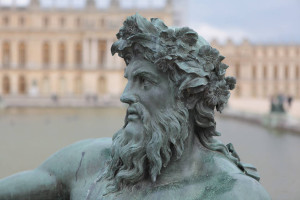WSJ Historically Speaking: A Valentine to the Bad Boys of Literature

Among the ancient Greeks, the greatest ‘bad boy’ of them all was Zeus. PHOTO: GETTY IMAGES
In “Pride and Prejudice” Jane Austen highlighted a truth not universally acknowledged when she made Elizabeth Bennett fall for the dark and brooding Mr. Darcy rather than for a sweet-tempered suitor like her sister Jane’s Mr. Bingley.
Readers just love the bad boys. As Lady Caroline Lamb once said about her lover Lord Byron, it’s the men who are “mad, bad and dangerous to know” who set the heart racing.
Among the ancient Greeks, the greatest “bad boy” of them all was Zeus, who had his wicked way with innumerable nymphs and princesses, though his Olympian brothers were little better. For sheer priapic energy, however, the prize goes to Gilgamesh, god and hero of the Sumerian epic that bears his name. His lust, we’re told, left “no virgin to her lover, neither the warrior’s daughter nor the wife of the noble.”
There was an interlude during the Middle Ages when the poetry of courtly love favored the good guys. But it’s not clear how well that went over: The troubadours and knights in shining armor never seemed to succeed in winning the hearts of their beloved. No woman in her right mind could put up with all that pining and swooning. Pity poor Laura, the object of the love sonnets of Petrarch (1304-1374), forced to endure endless lamentations about his soul “crushed with care.”
In the Renaissance and its aftermath, it didn’t take long for such heroic desperados as Othello and Romeo to evolve into something more dangerous. The unrepentant Don Giovanni of Mozart’s 1787 opera killed anyone who stood in his way and notched 1,003 female conquests in Spain alone. The preening Valmont in Pierre Choderlos de Laclos’s 1782 “Dangerous Liaisons” deliberately corrupted one unsuspecting young woman and drove another to her death. In Alexander Pushkin’s 1833 “Eugene Onegin,” the eponymous monster of selfish egotism shoots his close friend and destroys the happiness of two sisters. When these antiheroes desired a woman, they couldn’t rest until they possessed her—which, presumably, is part of their attraction.
The “mad” part of the equation became popular in the mid-19th century, when no self-respecting romantic hero could get through a story without displaying some headbanging and frothing at the mouth. In “Jane Eyre,” Charlotte Brontë has the arrogant Mr. Rochester tell the heroine: “I must have you…My soul demands you: it will be satisfied, or it will take deadly vengeance on its frame.” Charlotte’s sister Emily has the even more savage Heathcliff of “Wuthering Heights” fall into paroxysms of despair over Catherine: “Be with me always—take any form—drive me mad! Only do not leave me in this abyss, where I cannot find you! Oh, God! It is unutterable!”
Since then, lovers in the “mad, bad and dangerous to know” category have slipped ever deeper into the darker recesses of depravity. From Count Dracula to Patrick Bateman of Bret Easton Ellis’s 1991 novel “American Psycho,” the pursuit of love has changed to a dance with death. The biggest selling romance novel of the 21st century, “Fifty Shades of Grey,” is about a sadistic billionaire and his fetish for whips. As the Bard said in “The Merchant of Venice,” “Love is blind and lovers cannot see the pretty follies that themselves commit.”
